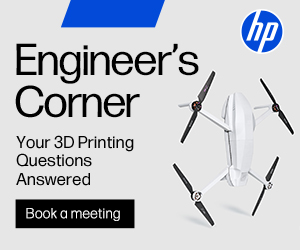New 3D Printed Continuum Soft Robot Can Lift 3 Pounds
Usually when we think of robots in everyday life, it’s something anthropomorphic, maybe a cross between C-3PO and Rosie the robot maid from The Jetsons.

A continuum segment with a soft ‘hinge’ between each pair of vertebrae, allowing for increased torsional rigidity (Image: University of Leeds)
But robots don’t always represent the human form, and some kinds are never depicted in pop culture. Take continuum robots, who have found work in the aerospace industry, robotic surgery, and bomb disposal. Also called snake-arm robots, these slender machines can bend in smooth curves with all or most of their bodies.
These octopus-esque arms are usually mobilized by cables that generate force from the base of the limb that is then transferred up to different attachment points throughout the arm. This gives the robot the mobility and torque needed to move and twist. All of this is powered by electric motor actuators, which offer a high degree of control as well.
One challenge with these snakebots is that certain designs (like those with the actuators located in curved section) provide flexibility and torsion at the expense of strength and speed. This lack of rigidity is one of the main limitations in developing stronger and sturdier robotic lifting arms.
Solutions to this issue using precision engineering are costly, something a team of researchers at the University of Leeds is hoping to mitigate with 3D printing.
The Leeds’ Team’s Design

Motor, spool, and interlocking vertebrae arrangements for the tested segment designs. (Image: University of Leeds)
In a recent study, the researchers’ goal was to create a 3D-printed continuum robot segment with wide utility. To give stronger torsional rigidity, they opted to use of equally-spaced ‘vertebrae’ segments along a continuous flexible backbone (like in a standard serpentine robot). These segments help guide four tendons that move the arm but can also interlock with one another to generate rigidity.
Thanks to 3D printing, iterations on different versions of designs could be printed quickly. The segments housing each vertebrae segment printed pre-assembled with a Stratasys Objet1000 multi-material printer. Tango+ material comprised the soft, flexible backbone and more rigid Vero material made up the vertebrae themselves. To actually hold things, the design had a centralized bore that provided suction.
A Test of Strength

The segment testing mount to which increasing weights were added to the tip. (Image: University of Leeds)
The team settled on two designs to test for measuring lifting capabilities.
To test the arms’ individual segments, each was mounted horizontally to said rig. The tests began from two distinct starting positions: one from completely vertical, which activated one of the arm’s motors; and another rotated 45 degrees vertically which activated both motors. The test started from the segment’s lowest limit of motion, with the weight lifted vertically as high as possible.
At its best, the team’s V 1.2 design that engaged both motors was able to carry a max payload of 1300g (1.3kg/2.86lbs). For this configuration, the average speed under max payload was 10 degrees per second. The interlocking vertebrae design’s performance was also encouraging as it performed predictably under load.
While 1.3 kilos might seem like a paltry amount compared to what conventionally-made industrial robots can do, this could be the first step toward replacing those with 3D printed ones that are technically superior.
To get to that point, the Leeds team is looking to connect these individual segments into an even more capable working arm. No word on when they’ll get to testing a ‘dusting the furniture’ motion.
Discuss this and other 3D printing topics at 3DPrintBoard.com or share your thoughts below.
[Source: WhiteRose]
Subscribe to Our Email Newsletter
Stay up-to-date on all the latest news from the 3D printing industry and receive information and offers from third party vendors.
Print Services
Upload your 3D Models and get them printed quickly and efficiently.
You May Also Like
Stifel’s AM Forward Fund Launches, Looking for US Manufacturers to Invest In
The need for greater resiliency in the defense supply chain is real and urgent. One area the US government has been focusing on is building a faster and more sustainable...
3D Printing Financials: Xometry Cuts Losses, Grows Platform
Xometry (Nasdaq: XMTR) is entering 2025 with momentum. The company delivered record quarterly revenue and narrowed its losses, showing progress toward profitability. More importantly, for those watching the future of...
3D Spark Secures $2.2M to Tackle Manufacturing Bottlenecks
German startup 3D Spark has raised two million euros in a seed round. Swedish software investor Triplefair Partners led the round, with Fraunhofer Technologie-Transfer Fonds (FTTF) and Innovationsstarter Fonds Hamburg...
3D Printing Financials: Protolabs Reports 3D Printing Dip, But Metal 3D Orders Grow
Protolabs (NYSE: PRLB) kicked off 2025 with a mixed but steady performance. Revenue remained close to expectations, profits dipped slightly from last year, and the company was profitable despite ongoing...






























